Stray light analysis and optimization design for optical system of space detection camera
-
摘要:
由于空间光环境的复杂性,抑制杂散光对保证空间相机成像性能尤其重要,该文针对宽光谱波段成像的空间探测相机光学系统进行杂散光分析和抑制优化设计。通过SOLIDWORKS和TracePro的无损式数据交互建立光机模型,并从光机材料的表面特性、机械结构、镜片透过率等多角度优化杂散光模型,再利用朗伯体光源分别对正反向进行光线追迹,然后结合光机模型的半剖图对系统关键表面进行重点取样分析。分析结果表明:优化后的光机系统在离轴角10.3°~15.4°内,点源透过率值与优化前的系统相比下降了66%~99.4%,在离轴角大于14.2°时点源透过率值接近10−4量级,在离轴角18.4°处杂散光的点源透过率约为10−4量级。最后通过鬼像实验,进一步证明了优化后的光机系统设计方法具有良好的杂散光抑制效果。
Abstract:Because of the complexity of space light environment, suppressing stray light is particularly important to ensure the imaging performance of space cameras. The stray light analysis and suppression optimization design were carried out for the optical system of the space probe camera for wide-band imaging. The optomechanical model was established through the lossless data interaction between SOLIDWORKS and TracePro, and the stray light model was optimized from the surface characteristics, mechanical structure, lens transmittance and other aspects of the optomechanical material. Then, the forward and reverse directions were traced by the Lambert body light source, and the key surfaces of the system were sampled and analyzed in combination with the half-section diagram of the optomechanical model. The analysis results show that the point source transmittance of the optimized optomechanical system at the off-axis angle of 10.3°~15.4° decreases by 66%~99.4% compared with that of the original system. The point source transmittance at the off-axis angle of more than 14.2° is close to the order of 10-4, and the point source transmittance of stray light at the off-axis angle of 18.4° is about 10-4. The ghost image experiment further proves that the optimized design of optomechanical system has good stray light suppression effect.
-
Keywords:
- space detection camera /
- stray light /
- simulation modeling /
- ray tracing /
- point source transmittance /
- ghost image
-
引言
高压绝缘子作为电气绝缘元件被广泛应用于电力输电工程中, 伞裙为高压绝缘子提供了主要的爬电距离[1]。由于长期工作在恶劣气候环境下, 受高低温、暴风雪等多种因素影响, 绝缘子的伞裙易发生老化变形, 引起爬电距离的减小, 容易导致伞裙间的电弧桥接, 降低高压绝缘子的污闪电压, 从而导致污闪事故, 威胁电网的安全运行[2-5]。因此, 定期开展高压绝缘子的污秽度测量是电网系统防污闪工作的重要内容之一, 而伞裙直径、表面积以及爬电距离等参数是表征绝缘子污秽程度的重要指标。如何快速、高精度地测量绝缘子的爬电距离是目前国家电网系统面临的一个难题, 其最大的困难是高压绝缘设备在带电状态下无法在线测量[6]。
目前, 电网检修人员主要是在每年非常短暂的停电检修期间, 利用柔性绳紧密贴合绝缘子表面来测量爬电距离[7](爬电距离为绝缘子所有伞裙外轮廓弧段之和), 这种人工测量方法对于高空的绝缘子需先拆卸下来再测量, 测量效率低、工作量巨大、且测量精度低。为了解决该难题, 武汉大学刘亚文等人提出了一种线结构光摄影测量方法, 采用单反相机加上激光条发生器来获取绝缘子的外轮廓形貌, 通过匹配算法来获得绝缘子的爬电距离[8]。这种基于激光三角法的线结构光测量系统, 大多采用532 nm或633 nm的线状激光发射器, 在室外强太阳光环境下, 可见光相机无法得到良好的带有线结构光的绝缘子图像, 即此类系统只能在室内或者阴天条件下使用[9], 无法在室外强光下有效测量高压绝缘子的爬电距离, 其实用性大打折扣。
为了解决高压绝缘子爬电距离带电检测的难题, 克服强太阳光干扰, 实现高精度、高效率的有效测量, 本文针对110 kV变电站中绝缘子的实际情况, 研制了一种基于双目立体视觉的高压绝缘子爬电距离带电检测系统, 采用两组变焦镜头满足了在不同位置对变电站中各种型号的绝缘子进行测量的要求, 并有效解决了强太阳光的干扰问题。爬电距离的精确快速测量, 对于电力部门估算绝缘子清扫周期、及时更换损坏的绝缘子设备、保障电网运行的安全性具有重要的指导意义。
1 工作原理及系统组成
双目立体视觉系统一般通过空间位置不同的两台相机采集同一物体的图像, 模仿人眼的视差, 提取图像中对应的特征点, 将两幅平面图像的二维坐标经立体匹配后建立成三维坐标, 获得该物体的空间坐标, 从而进行距离和尺寸测量、三维重构、目标定位等[10-12]。双目立体视觉的基本原理如图 1所示, 世界坐标系OwXwYwZw中的任意一点P在左右两个相机图像中的成像位置可用针孔成像模型来近似表示。设左相机的相机坐标系为o1x1y1z1, 其图像坐标系为c1-u1v1, P点在左相机图像中的投影点为P1, 那么空间物点P与像点P1存在如下的透视投影关系[13-14]。
$$ \begin{array}{l} s\left( {\begin{array}{*{20}{l}} {{u_1}}\\ {{v_1}}\\ 1 \end{array}} \right) = \left( {\begin{array}{*{20}{c}} {{f_x}}&0&{{u_0}}\\ 0&{{f_y}}&{{v_0}}\\ 0&0&1 \end{array}} \right)·\\ \;\;\;\;\;\;\;\;\;\;\;\left( {\begin{array}{*{20}{c}} {{r_{11}}}&{{r_{12}}}&{{r_{13}}}&{{t_1}}\\ {{r_{21}}}&{{r_{22}}}&{{r_{23}}}&{{t_2}}\\ {{r_{31}}}&{{r_{32}}}&{{r_{33}}}&{{t_3}} \end{array}} \right)\left( {\begin{array}{*{20}{c}} {{X_w}}\\ {{Y_w}}\\ {{Z_w}}\\ 1 \end{array}} \right) \end{array} $$ (1) 式中:s为非零的比例系数; (u1, v1)T为像点P1的图像坐标; fx, fy分别为图像在x轴和y轴方向上的尺度因子, 也称为左相机的归一化焦距; (u0, v0)T为左相机镜头的主点坐标; RL=(rij)3×3为世界坐标系转换到左相机坐标系的正交旋转矩阵; tL=(tx, ty, tz)T为世界坐标系原点Ow转换到左相机坐标系的平移矢量; (Xw, Yw, Zw)T为物点P在世界坐标系下的坐标。fx、fy、u0、v0为左相机的内部参数, 可在相机标定时获得。
若已知像P1的图像坐标, 求取物点P的世界坐标时, 对(1)式化简可得2个方程:
$$ \left\{ {\begin{array}{*{20}{l}} {{A_{L - 1}}{X_w} + {B_{L - 1}}{Y_w} + {C_{L - 1}}{Z_w} = {D_{L - 1}}}\\ {{A_{L - 2}}{X_w} + {B_{L - 2}}{Y_w} + {C_{L - 2}}{Z_w} = {D_{L - 2}}} \end{array}} \right. $$ (2) 式中:
$$ \left\{ {\begin{array}{*{20}{l}} {{A_{L - 1}} = {f_x}{r_{11}} - \left( {{u_1} - {u_0}} \right){r_{31}}}\\ {{B_{L - 1}} = {f_x}{r_{12}} - \left( {{u_1} - {u_0}} \right){r_{32}}}\\ {{C_{L - 1}} = {f_x}{r_{13}} - \left( {{u_1} - {u_0}} \right){r_{33}}}\\ {{D_{L - 1}} = \left( {{u_1} - {u_0}} \right){t_z} - {f_x}{t_x}} \end{array}} \right., \;\;\;\;\;\;\;\left\{ {\begin{array}{*{20}{l}} {{A_{L - 2}} = {f_y}{r_{21}} - \left( {{u_1} - {u_0}} \right){r_{31}}}\\ {{B_{L - 2}} = {f_y}{r_{22}} - \left( {{u_1} - {u_0}} \right){r_{32}}}\\ {{C_{L - 2}} = {f_y}{r_{23}} - \left( {{u_1} - {u_0}} \right){r_{33}}}\\ {{D_{L - 2}} = \left( {{u_1} - {u_0}} \right){t_z} - {f_y}{t_y}} \end{array}} \right. $$ (3) 同理, 设右相机与世界坐标系对应的旋转矩阵和平移矢量分别为RR和tR, 物点P在右相机中的投影像点P2的图像坐标为(u2, v2), 可得出P2与P的透视关系:
$$ \left\{ {\begin{array}{*{20}{l}} {{A_{R - 1}}{X_w} + {B_{R - 1}}{Y_w} + {C_{R - 1}}{Z_w} = {D_{R - 1}}}\\ {{A_{R - 2}}{X_w} + {B_{R - 2}}{Y_w} + {C_{R - 2}}{Z_w} = {D_{R - 2}}} \end{array}} \right. $$ (4) 通过最小二乘法解(2)式和(4)式构成的线性方程组即可求解出空间任意物点P的三维坐标。
通常高压变电站拥有多种不同型号的绝缘子, 其外形尺寸差异较大, 工作位置距离地面的高度也不尽相同。本文针对110 kV变电站中绝缘子的实际情况, 为满足测量多种不同类型的绝缘子, 采用2个参数相同的电动变焦镜头为双目立体视觉系统左右相机的光学镜头, 其变倍比为17x, 焦距7.5 mm~128 mm, 可变光圈范围F1.6~T360, 变焦和对焦动作均由直流电机和位置传感器控制。如图 2所示, 利用2个参数完全相同的CMOS相机作为双目立体视觉系统的探测器, 探测器的焦平面与电动变焦镜头的焦面重合, 探测器通过USB接口将采集到的绝缘子图像传输给计算机。其中CMOS相机像面大小为1/2 inch(1 inch=2.54 cm), 像素尺寸为3.2 μm, 分辨率为2 048×1 536。此外, 本系统中加入了线结构光发生器用来构造双目立体视觉测量时的特征点, 其发射一束可调线宽的激光直线, 照射到待测绝缘子表面。线宽的调整以及电动变焦镜头的同步变焦和对焦由计算机和控制模块根据标定的物距来进行自动控制。在测量时, 控制模块控制两台电动变焦镜头同时变焦和聚焦找到合适的图像位置后, 调整线结构光发生器, 使激光直线以最细的线宽打在绝缘子中线处, 左右2个CMOS相机同时采集图像, 并传递到标定好的数据采集分析软件中, 通过软件对采集的图像进行自适应阈值分割并自动提取特征点, 经过立体匹配, 得到特征点云的空间三维坐标, 计算相邻特征点的空间距离, 即可得到绝缘子的爬电距离。
2 线结构光发生器
利用线结构光来提供左右两幅图像进行立体匹配的特征点, 是双目立体视觉技术中的一种常用方法。然而在测量绝缘子的爬电距离时, 对所采用的线结构光有特殊的要求:1)在10 m~50 m投射距离内均有窄线宽, 以实现特征点的精确提取; 2)整个激光线条能够绕激光出射光轴旋转180°, 使激光线条能够对准任意空间姿态的待测绝缘子中线。
为了满足本项目对线结构光的特殊要求, 我们设计了一套基于变焦光学系统和圆锥面离轴反射镜的线结构光发生装置, 其原理如图 3所示。半导体激光器波长532 nm, 功率32 mW, 出射光束直径1.5 mm, 发散角优于1.2 mrad。二维反射镜调整架使激光与变焦光学系统的光轴重合, 通过设计变焦光学系统参数, 使其在连续变焦过程中实现激光束在有限距离10 m~50 m内始终聚焦为极小光斑。M1~M4均为平面反射镜, 起折转光路作用; 将激光束变换为激光线条的关键器件是圆锥面离轴反射镜, 其与变焦系统共同作用产生线宽可调的线结构光。M2~M4与圆锥面离轴反射镜作为一个整体, 可以绕变焦光学镜组的光轴旋转180°, 那么产生的激光线条同样可绕光轴旋转180°, 从而对齐不同空间姿态的绝缘子。若测量过程中激光光条与绝缘子中线存在一个小角度, 那么爬电距离的测量值将略大于真值, 两者之间为余弦关系。
变焦光学系统包含两组双胶合透镜, 具体光学参数如图 4(a)所示, 在光学设计时将两组双胶合透镜的间隔设为自变量, 以多个投影距离处(在10 m~50 m范围内均匀采样)的光斑直径为优化函数。经过Zemax优化设计, 可得到各投影距离所对应的两组双胶合透镜之间的最优间隔。即改变两组双胶合透镜的间距可实现在激光线条在10 m~50 m任意位置聚焦, 该变焦光学系统的变倍比为5倍。激光线宽与投射距离的关系如图 4(b)所示, 在10 m和50 m处的激光线宽分别为0.91 mm和3.68 mm, 对测量时特征点的选取影响均小于2个像素。
离轴圆锥面反射镜可将圆形激光光束变换为线状激光光条, 其工作原理见图 5(a)。若光斑直径为D的平行光束以45°沿着z轴入射到圆锥角为90°的圆锥面离轴反射镜上, 则反射光束沿y轴出射且发散角在z轴方向上保持不变, 但在x轴方向上明显增大。假设入射光束中心在圆锥面反射镜上的离轴量为ε, 投影距离为d, 那么将得到线宽为D、线长为L的线结构光:
$$ L = \left( {\frac{d}{\varepsilon } + 1} \right)D $$ (5) 由于变焦光学系统的存在, 入射到圆锥面离轴反射镜上的光束并不是平行光, 而是发散角为负的会聚光束。那么真实的激光线条长度应该短于公式的计算值, 修正后公式变为
$$ \begin{array}{l} {L^\prime } = 2\tan \left( {\arctan \left( {\frac{D}{{2\varepsilon }}} \right) - \arctan \left( {\frac{{D - {D^\prime }}}{{2d}}} \right)} \right) \cdot \\ \;\;\;\;\;\;(d + \varepsilon ) \end{array} $$ (6) 式中D′为投影距离处的真实线宽。
在实际测量中, 要求线结构光的长度不短于被测绝缘子的长度。在激光器功率固定时, 激光线条越长, 光强越弱, 故需根据实际情况合理设计圆锥面反射镜的离轴量。我们采用单点金刚石车床, 以硬质铝合金为材料加工了圆锥面离轴反射镜, 并镀上一层保护膜防止超光滑的金属表面与空气发生氧化, 加工后实物如图 5(b)所示, 其圆锥角为90°, 离轴量为100 mm。由于待测绝缘子有多种型号, 其中尺寸最长的为2 m, 测量时最短投影距离为10 m, 而线结构光发生器中的激光光束经过变焦光学系统后的光束直径为19.8 mm, 投影距离处真实线宽为0.91 mm, 根据(6)式可计算出圆锥离轴反射镜的离轴量为100 mm。
3 强太阳光环境下的特征点提取
由于受人眼激光安全标准限制, 线结构激光光条的功率不能超出Class Ⅱ规定的标准。而在晴朗的天气情况下, 室外太阳光在532 nm波段的能谱很强, 导致相机采集到的被测绝缘子图像中难以分辨出激光光条, 严重干扰双目立体视觉的特征点提取和立体匹配, 导致测量失败。
为克服强太阳光的干扰, 我们在光学镜头前增加了窄带滤光片, 效果见图 6, 图 6(a)为右相机拍摄的复合型绝缘子图像, 图 6(b)为左相机拍摄的复合型绝缘子图像, 其中左相机前放置了一块窄带滤光片, 中心波长532 nm±0.6 nm, 半高宽3 nm±0.6 nm, 截止深度为-40 dB。通过对比不同性能参数的窄带滤光片, 可以发现半高宽越小、截止深度越小, 对强太阳光的抑制效果越好, 但是过窄的半高宽和小的截止深度会降低到达像面的光通量, 导致曝光时间增加, 采集图像的帧频过低。因此, 窄带滤光片设计成可快速拆卸的结构, 实际工作时根据室外太阳光的强度选择不同参数的窄带滤光片。根据窄带滤光片的半高宽参数, 将窄带滤光片分为6组, 对应的半高宽分别为1 nm±0.2 nm、3 nm±0.6 nm、5 nm±1 nm、10 nm±2 nm、20 nm±4 nm、40 nm±8 nm, 在室外强太阳光环境下工作时, 对窄带滤光片的选取原则是:在保证采集图像的帧频不低于24 Hz的前提下, 选择半高宽较小的窄带滤光片, 一般在阴天时则无需安装窄带滤光片。这样有效地增强了图像中线结构光的对比度, 从而更容易提取特征点进行左右两幅图像的立体匹配。
由于测量处于室外环境下, 采集到的图像背景比较复杂, 在提取特征点之前需要对图像进行预处理来减小噪声、将背景与目标分割开来。先将彩色图像变换为灰度图像, 进行中值滤波, 然后基于最大类间方差法实现灰度图像的自适应阈值分割。阈值化分割的主要目的是获得具有高灰度值的激光线条的初始区域, 而剔除强太阳光产生的反射亮点。基于灰度重心法对激光光条进行细化处理, 提取中心线。以图 6(b)为初始图像, 结合最大类间方差法和灰度重心法对其进行特征点自动提取, 结果如图 7所示:图 7(a)为中值滤波后的灰度图像, 图 7(b)为采用Otsu’s算法阈值分割的结果, 图 7(c)为基于最大类间方差法按上述步骤进行自适应阈值分割后的图像, 图 7(d)为采用灰度重心法进行激光线中心的自动提取结果。通过对比可以发现, 传统的Otsu’s阈值分割方法难以剔除由于太阳光反射产生的亮斑干扰, 而本文所采用的方法能够有效地从复杂背景中提取出激光特征点。
对于某些型号的高压绝缘子, 其伞裙较大, 在测量过程中伞裙间不可避免地会发生相互遮挡, 以一个角度获取的图像难以测量完整的爬电距离。因此, 我们分别以2个不同的角度去采集图像, 使左右相机分别获取2幅图像, 得到完整的激光线条图像。如图 8所示, 图 8(a)、(b)分别为设备位于待测绝缘子右侧时左右2个相机采集的图像, 图 8(c)、(d)分别为设备位于待测绝缘子左侧时左右2个相机采集的图像。
对上述图像分别进行特征点提取, 结果如图 9(a)~图 9(d)所示。然后基于尺度不变特征变换匹配(SIFT)算法分别将图 9中的(a)和(b)、(c)和(d)进行特征匹配, 找到左右两幅图像中的特征对应点, 即获得了空间某点P在左右2个相机中的像素坐标, 基于双目立体视觉原理, 采用(2)~(4)式即可解算出P点的空间三维坐标。逐点计算特征匹配以后激光光条中心线上每一特征点的空间坐标。由于绝缘子伞群间存在相互遮挡, 由图 9(a)和(b)特征匹配得到的特征点云, 和由图 9(c)和(d)特征匹配得到的特征点云都不是完整的。设定空间坐标误差阈值, 基于最小二乘法寻找这2个特征点云中具有相同空间坐标的特征点, 进行配准, 将这2个特征点云合成为一个完整的特征点云。并用线段连接相邻的特征点, 计算相邻点之间的空间距离, 所有线段之和即为绝缘子的爬电距离, 如图 9(e)所示。
4 系统标定及精度测试
通过在高压变电站实地考察, 综合考虑待测绝缘子的大小、空间位置以及方便架设仪器的地点到绝缘子的距离等因素, 根据实际测量需求, 本系统设置了7组不同焦距, 每组焦距有3~7组不同的对焦位置, 共28组变焦和对焦位置, 以保证从10 m~50 m物距范围内待测绝缘子均能清晰成像。并利用张友正标定法[15-16]依次对这28组变焦和对焦位置进行系统标定, 确定各组参数下双目立体视觉光学系统的内部参数和外部参数。
在系统标定完成后, 对爬电距离为1 580 mm的复合绝缘子样品进行了精度测试。依次将左右相机前的2个变焦镜头同步调节到系统标定时的7组焦距, 并在每组焦距下将待测绝缘子分别放置在不同物距上, 分别对应标定时的对焦位置。即测试本系统在28组不同光学参数下对同一个绝缘子爬电距离的测量误差。其测试结果如表 1所示。
表 1 爬电距离测试结果Table 1. Testing results of creepage distances序号 焦距/mm 物距/m 爬电距离/mm 绝对误差值/mm 相对误差 1 30 10 1 590.95 10.95 0.69% 2 30 12 1 597.65 17.65 1.12% 3 30 14 1 602.93 22.93 1.45% 4 41 10 1 585.94 5.94 0.38% 5 41 13 1 589.22 9.22 0.58% 6 41 16 1 596.35 16.35 1.03% 7 52 10 1 586.34 6.34 0.4% 8 52 13 1 588.67 8.67 0.55% 9 52 16 1 592.07 12.07 0.76% 10 52 19 1 593.75 13.75 0.87% 11 70 15 1 598.27 18.27 1.16% 12 70 18 1 587.97 7.97 0.5% 13 70 21 1 598.39 18.39 1.16% 14 89 14 1 582.37 2.37 0.15% 15 89 18 1 586.86 6.86 0.43% 16 89 21 1 589.92 9.92 0.63% 17 89 24 1 593.38 13.38 0.85% 18 108 18 1 581.68 1.68 0.11% 19 108 20 1 586.99 6.99 0.44% 20 108 24 1 585.13 5.13 0.32% 21 108 28 1 585.75 5.75 0.36% 22 126 28 1 580.74 0.74 0.05% 23 126 32 1 590.27 10.27 0.65% 24 126 36 1 591.93 11.93 0.76% 25 126 40 1 589.25 9.25 0.59% 26 126 44 1 592.98 12.98 0.82% 27 126 48 1 598.34 18.34 1.16% 28 126 50 1 601.51 21.51 1.36% 平均值 1 590.91 10.91 0.69% 当采用双目立体视觉原理来测量三维物体的表面形貌时, 双目立体视觉光学系统的内部参数和外部参数的标定误差、图像特征点的提取误差、光学镜头的畸变误差等均为系统误差, 都可归结为像素误差。由于不同型号的高压绝缘子具有不同的外形尺寸, 当采用不同焦距使不同尺寸的绝缘子在像面上所成的像具有相同大小时, 每个像素所代表的实际尺寸与被测绝缘子的长度成正比, 即测量大尺寸绝缘子的爬电距离时, 绝对误差会大于小尺寸的绝缘子, 故表 1采用相对误差来表征爬电距离的测量精度。
对于同一待测绝缘子, 爬电距离的测量误差与焦距和物距等参数有关, 因为待测绝缘子在像面上的大小正比于焦距与物距的比值。从表 1可知, 当焦距一定时, 测量误差与物距成正比, 其中最大相对误差为1.45%, 平均相对误差为0.69%, 满足了最大相对误差不超过5%的任务指标要求。在实际测量中, 根据高压绝缘子所在位置, 应该选择合适的变焦和对焦位置, 使其所成的像清晰。一旦待测绝缘子的大小和空间位置确定了, 那么变焦位置参数的选择决定了待测绝缘子在图像中的大小, 选择合适的变焦位置, 就是让待测绝缘子的像是完整的, 且在图像中占据较大比例, 降低每个像素代表的实际尺寸, 以提高测量精度; 当电动变焦镜头的焦距确定后, 根据待测绝缘子的像是否清晰, 即可判断对焦位置的选择是否合理。此外, 变焦光学镜头中的变焦组和对焦组在变焦过程中的机械定位重复性误差会导致光学镜头的实际光学参数与标定时的光学参数存在微小差异, 也会影响双目立体视觉的测量精度, 因此本文采用高精度的角度传感器作为变焦位置和对焦位置的反馈信号, 并采用闭环伺服控制方法提高机械定位精度。
为了验证本系统的实用性, 在青海省孙家寨110 kV变电站开展了绝缘子爬电距离的带电在线检测实验, 测试现场如图 10。本系统在现场经受了高原、冬季低温的实际考验, 检测对象覆盖变电站的支柱绝缘子、刀闸外绝缘、PT外绝缘、CT外绝缘、变压器套管以及避雷器外绝缘等运行中的一次电气设备的外绝缘爬电距离。实现了对高压绝缘子爬电距离的高精度、非接触、带电在线检测。
5 结论
基于双目立体视觉原理研制了一种高压绝缘子爬电距离的带电检测系统。为了解决强太阳光和复杂背景对特征点提取的干扰问题, 结合最大类间方差法和灰度重心法对采集到的图像进行自适应阈值分割, 实现了特征点的自动提取。实验结果表明, 爬电距离的最大相对测量误差为1.45%, 满足了实际测量的任务要求。目前本系统已成功应用于110 kV变电站中各种绝缘子的爬电距离在线带电测量, 为国家电网系统的防污闪工作提供了有效的技术保障。此外, 变焦光学系统在变焦过程中的机械定位重复性误差限制了测量精度的进一步提高, 未来将围绕此问题展开进一步研究。
-
-
[1] 刘洋, 方勇华, 吴军, 等. 中红外平面光栅光谱仪系统杂散光分析[J]. 红外与激光工程,2015,44(4):1164-1171. doi: 10.3969/j.issn.1007-2276.2015.04.011 LIU Yang, FANG Yonghua, WU Jun, et al. Stray light analysis for a mid-infrared plane grating spectrometer system[J]. Infrared and Laser Engineering,2015,44(4):1164-1171. doi: 10.3969/j.issn.1007-2276.2015.04.011
[2] 李晖, 李英才, 薛鸣球. 光学系统黑斑法杂光系数和PST间的联系[J]. 光子学报,1996,25(10):920-923. LI Hui, LI Yingcai, XUE Mingqiu. Relationship between heterochromatic coefficient and PST by black spot method of optical system[J]. Acta Photonica Sinica,1996,25(10):920-923.
[3] 宋延松, 杨建峰, 李福, 等. 基于杂散光抑制要求的光学表面粗糙度控制方法研究[J]. 物理学报,2017,66(19):84-92. doi: 10.7498/aps.66.194201 SONG Yansong, YANG Jianfeng, LI Fu, et al. Method of controlling optical surface roughness based on stray light requirements[J]. Acta Physica Sinica,2017,66(19):84-92. doi: 10.7498/aps.66.194201
[4] 孙林. 成像光学系统杂散光系数分析与计算[D]. 长春: 长春理工大学, 2019. SUN Lin. Analysis and calculation of the veiling glare index in optical systems[D]. Changchun: Changchun University of Science and Technology, 2019.
[5] 李俊杰, 孙剑, 赵珩翔, 等. 星载多普勒差分干涉仪杂散光特性与抑制[J]. 光子学报,2022,51(11):1130002. doi: 10.3788/gzxb20225111.1130002 LI Junjie, SUN Jian, ZHAO Hengxiang, et al. Stray light characteristics and suppression in space-borne Doppler asymmetric spatial heterodyne interferometer[J]. Acta Photonica Sinica,2022,51(11):1130002. doi: 10.3788/gzxb20225111.1130002
[6] HENDRIX J L, SCHWEYEN J C, ROWE J, et al. Ghost analysis visualizaion techniques for complex systems: examples from the NIF final optics assembly[J]. SPIE,1999,3492:306-320.
[7] 李芸, 相里斌, 李立波. 一种新型空间相机遮光罩的设计与仿真[J]. 光电工程,2010,37(7):41-44. LI Yun, XIANGLI Bin, LI Libo. Design and simulation of a new type of space camera hood[J]. Opto-Electronic Engineering,2010,37(7):41-44.
[8] 杨林, 李达, 崔天刚, 等. 空间太阳望远镜在紫外波段成像检测中的杂散光测量和消除[J]. 光学精密工程,2011,19(7):1456-1463. doi: 10.3788/OPE.20111907.1456 YANG Lin, LI Da, CUI Tiangang, et al. Stray light measurement and elimination in ultraviolet band imaging detection by space solar telescope[J]. Optics and Precision Engineering,2011,19(7):1456-1463. doi: 10.3788/OPE.20111907.1456
[9] 陆强. 地球同步轨道空间相机杂散光分析与应用技术的研究[D]. 上海: 中国科学院研究生院(上海技术物理研究所), 2016. LU Qiang. Research on stray light analysis and application technology of geosynchronous orbit space camera[D]. Shanghai: : Graduate School of Chinese Academy of Sciences(Shanghai Institute of Technical Physics, Chinese Academy of Sciences), 2016.
[10] 孙林. 成像光学系统杂散光系数分析与计算[D]. 吉林: 长春理工大学, 2019. SUN Lin. Analysis and calculation of the veiling glare index in optical systems[D]. Jilin: Changchun University of Science and Technology, 2019.
[11] 陈醒, 胡春晖, 颜昌翔, 等. 大视场空间可见光相机的杂散光分析与抑制[J]. 中国光学,2019,12(3):678-685. doi: 10.3788/co.20191203.0678 CHEN Xing, HU Chunhui, YAN Changxiang, et al. Analysis and suppression of space stray light of visible cameras with wide field of view[J]. Chinese Optics,2019,12(3):678-685. doi: 10.3788/co.20191203.0678
[12] 张燕. 杜瓦中冷光阑的杂散光抑制研究[J]. 红外,2010,31(7):1-8. doi: 10.3969/j.issn.1672-8785.2010.07.001 ZHANG Yan. Study of stray light suppression by cold shield in Dewar[J]. Infrared,2010,31(7):1-8. doi: 10.3969/j.issn.1672-8785.2010.07.001
[13] 邱瑜, 秦龚龙, 王世华. 用激光散射法非接触在线检测表面粗糙度[J]. 工具技术,2000,34(4):36-38. doi: 10.3969/j.issn.1000-7008.2000.04.013 QIU Yu, QIN Gonglong, WANG Shihua. Non-cotact in-process measuring surface roughness by laser scattering measuring device[J]. Tool Engineering,2000,34(4):36-38. doi: 10.3969/j.issn.1000-7008.2000.04.013
[14] 黄强. 空间光学系统的杂散光分析[J]. 红外,2006,27(1):26-33. doi: 10.3969/j.issn.1672-8785.2006.01.006 HUANG Qiang. Anlysis of stray light in space optical system[J]. Infrared,2006,27(1):26-33. doi: 10.3969/j.issn.1672-8785.2006.01.006
[15] 尚玲. 天基可见光探测相机光学系统设计及杂散光分析[D]. 西安: 中国科学院研究生院(西安光学精密机械研究所), 2011. SHANG Ling. Optical system design and stray light analysis of a space-based visible camera[D]. Xi'an: Graduate School of Chinese Academy of Sciences(Xi'an Institute of Optics and Precision Mechanics, Chinese Academy of Sciences), 2011.
[16] 舒星星. 可见光光学系统杂光分析及抑制[D]. 北京: 中国科学院大学, 2015. SHU Xingxing. Analysis and supression of stray light in visible light optical system[D]. Beijing: University of Chinese Academy of Sciences, 2015
[17] 李春菊. GT-7漆墨涂透镜的工艺[J]. 中国高新技术企业,2012(21):75-76. doi: 10.3969/j.issn.1009-2374.2012.21.032 LI Chunju. GT-7 the process of paint ink coated lenses[J]. China High Technology Enterprises,2012(21):75-76. doi: 10.3969/j.issn.1009-2374.2012.21.032
[18] 陈玉芳, 吴振聪, 王敏. 高分辨率微型星载相机光学系统的设计及应用[J]. 应用光学,2020,41(2):235-241. doi: 10.5768/JAO202041.0201001 CHEN Yufang WU Zhencong, WANG Min. Design and application of optical system for high-resolution micro space-borne camera[J]. Journal of Applied Optics,2020,41(2):235-241. doi: 10.5768/JAO202041.0201001
-
期刊类型引用(8)
1. 杨翠,刘冲,王海曼,董婷婷,魏雅婷,谷孟丽. 深度神经网络模型用于图像斑点微瑕疵检测. 安庆师范大学学报(自然科学版). 2022(04): 51-56 .  百度学术
百度学术
2. 项新建,王乐乐,曾航明. 基于机器视觉的推力轴承垫圈缺陷检测系统研究. 中国测试. 2021(02): 133-139 .  百度学术
百度学术
3. 徐建桥,吴俊,陈向成,吴丹超,李兵. 基于规范化样本拆分的轴承缺陷检测. 应用光学. 2021(02): 327-333 .  本站查看
本站查看
4. 朱春锦,黎鑫泽,朱建业,张浩. 基于机器视觉的牛奶盒吸管自动检测技术. 南方农机. 2021(10): 163-165 .  百度学术
百度学术
5. 李志飞,赵平,杨泽尚. 基于灰度共生矩阵的建筑工地扬尘识别方法. 西安邮电大学学报. 2021(03): 80-83 .  百度学术
百度学术
6. 杨萌. 基于红外无损检测的汽车缸体零件缺陷检测方法. 自动化与仪器仪表. 2021(08): 35-39 .  百度学术
百度学术
7. 杨晶晶,杨斐. 装甲车体非均匀焊接的红外检测. 兵器材料科学与工程. 2021(05): 131-135 .  百度学术
百度学术
8. 郑中华,陈文坚,卢宇,刘伟斌. 一种皮带轮规格测量及微缺陷检测方法研究. 国外电子测量技术. 2021(11): 58-63 .  百度学术
百度学术
其他类型引用(11)




 下载:
下载:









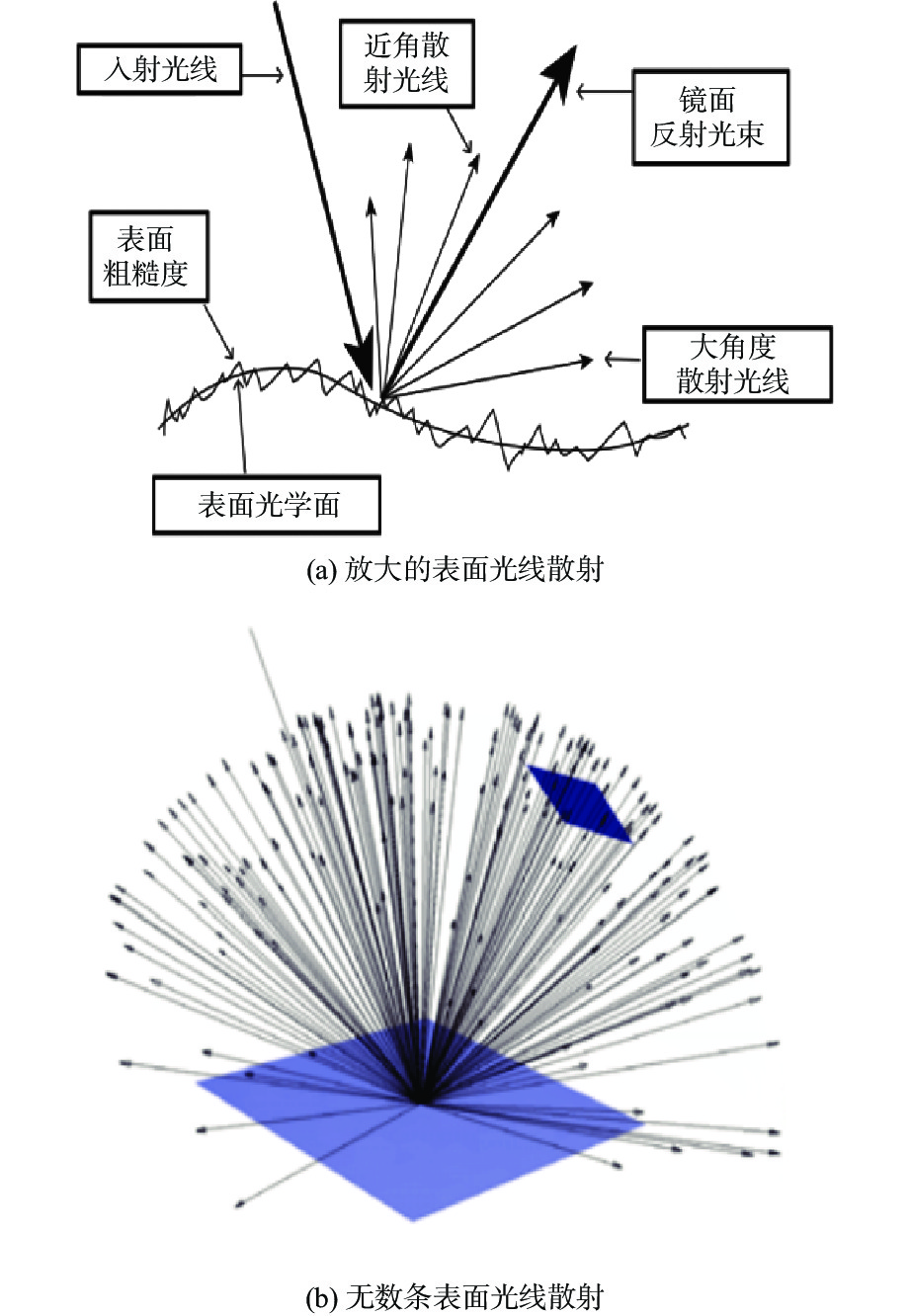
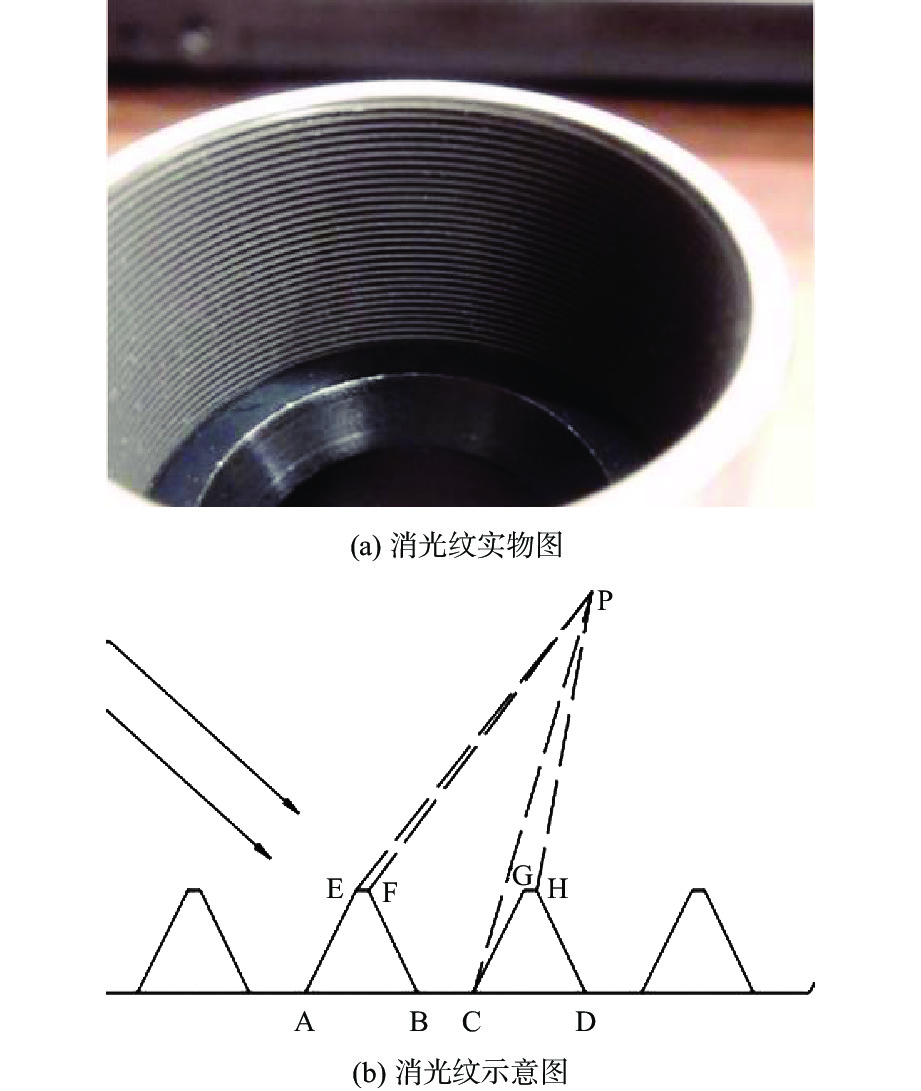


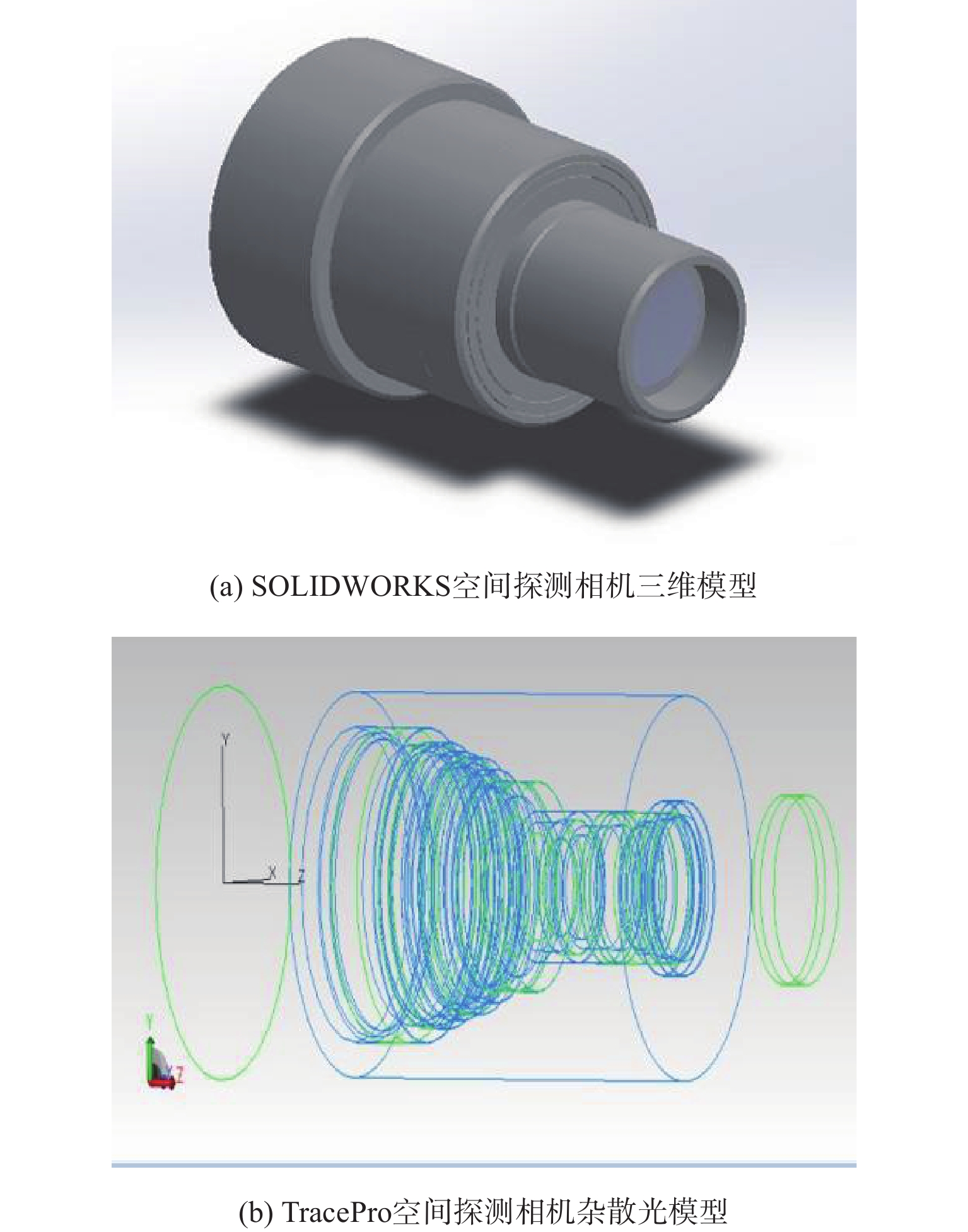

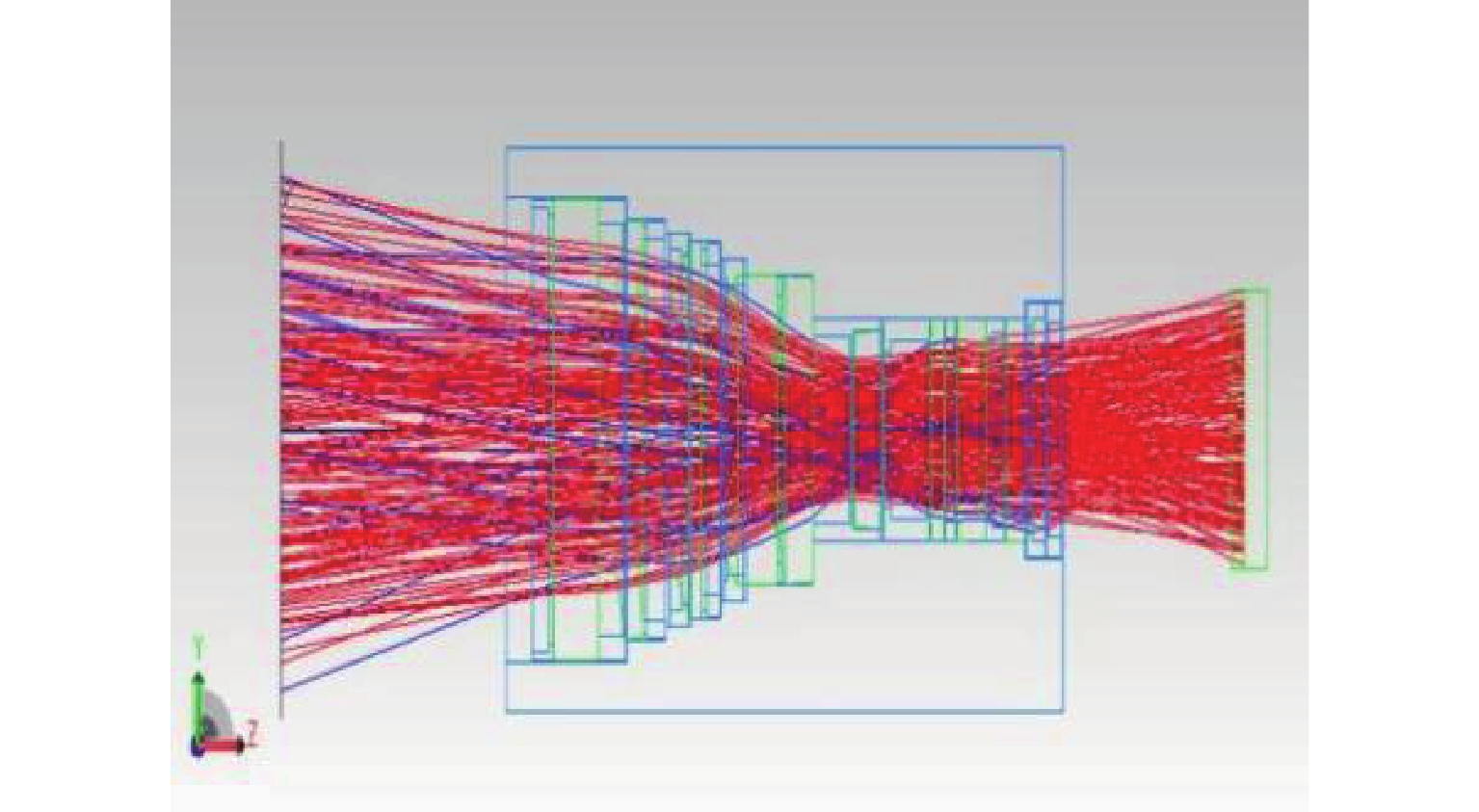
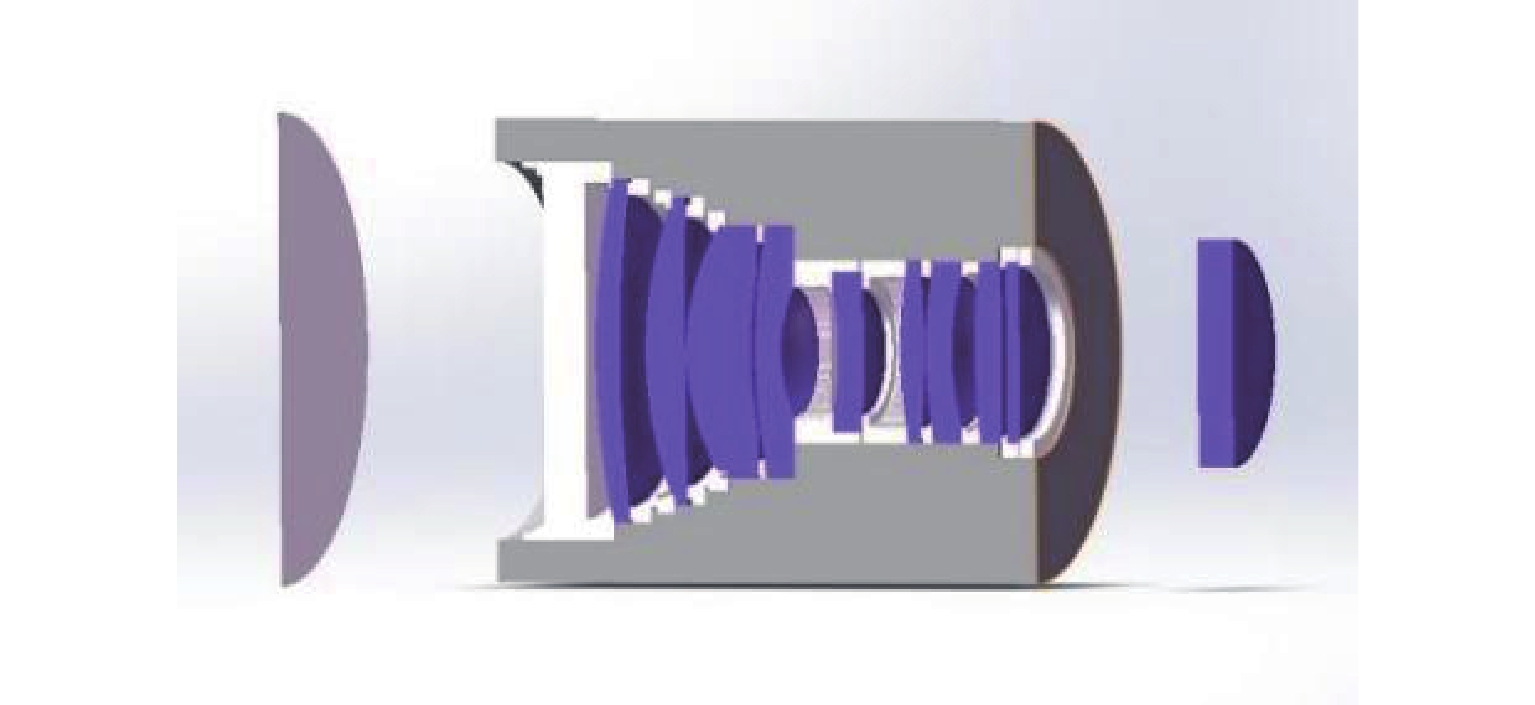


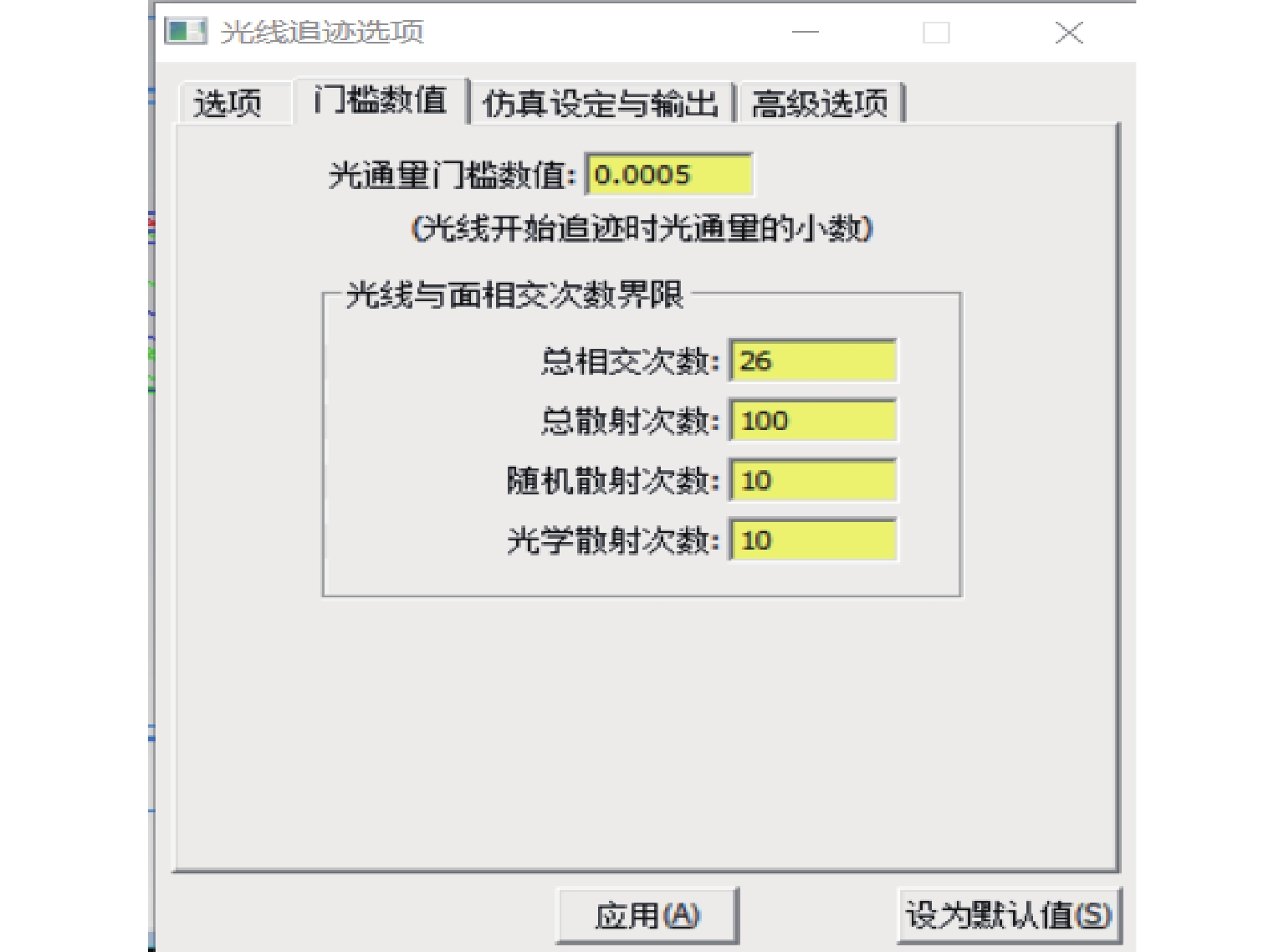
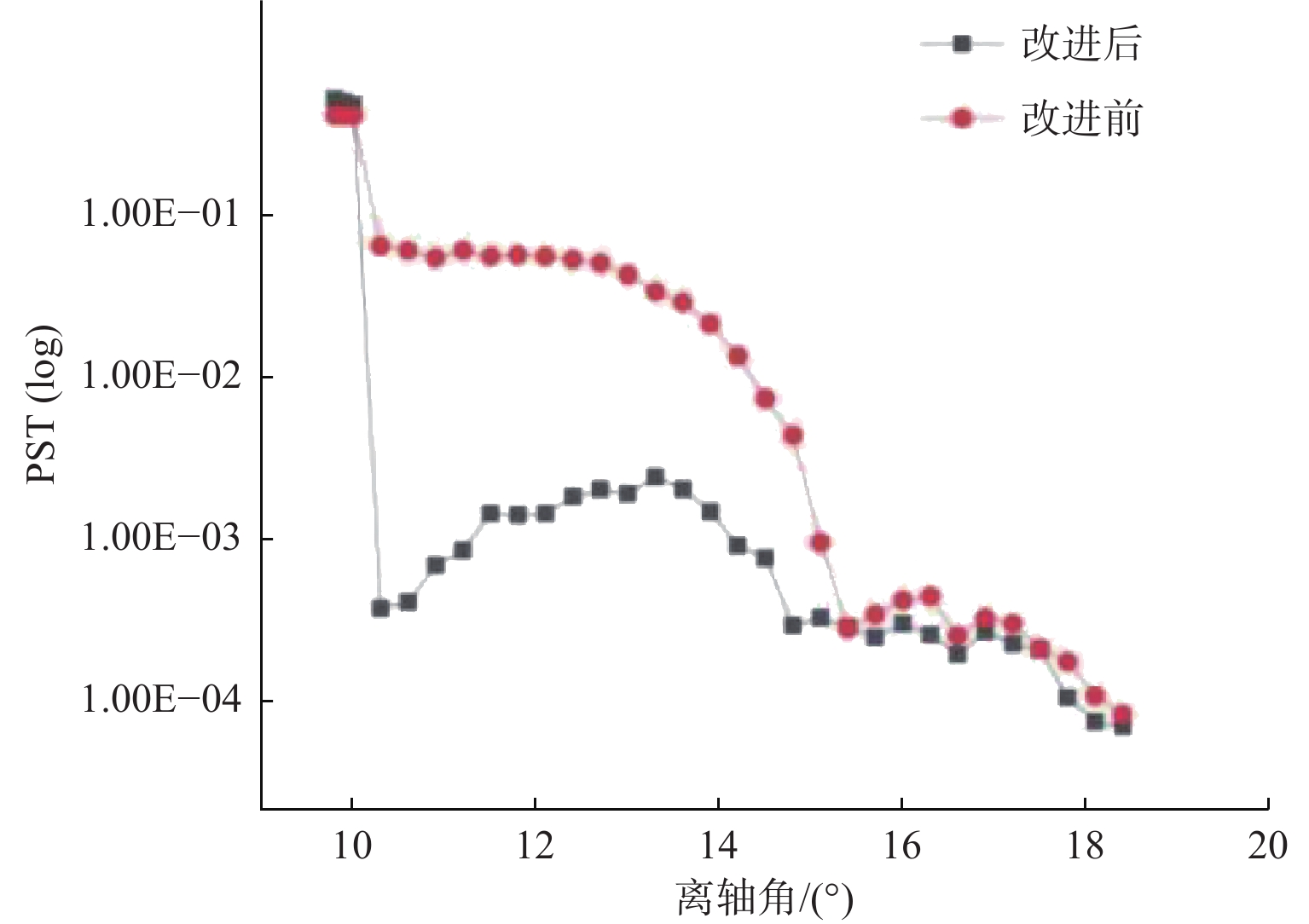
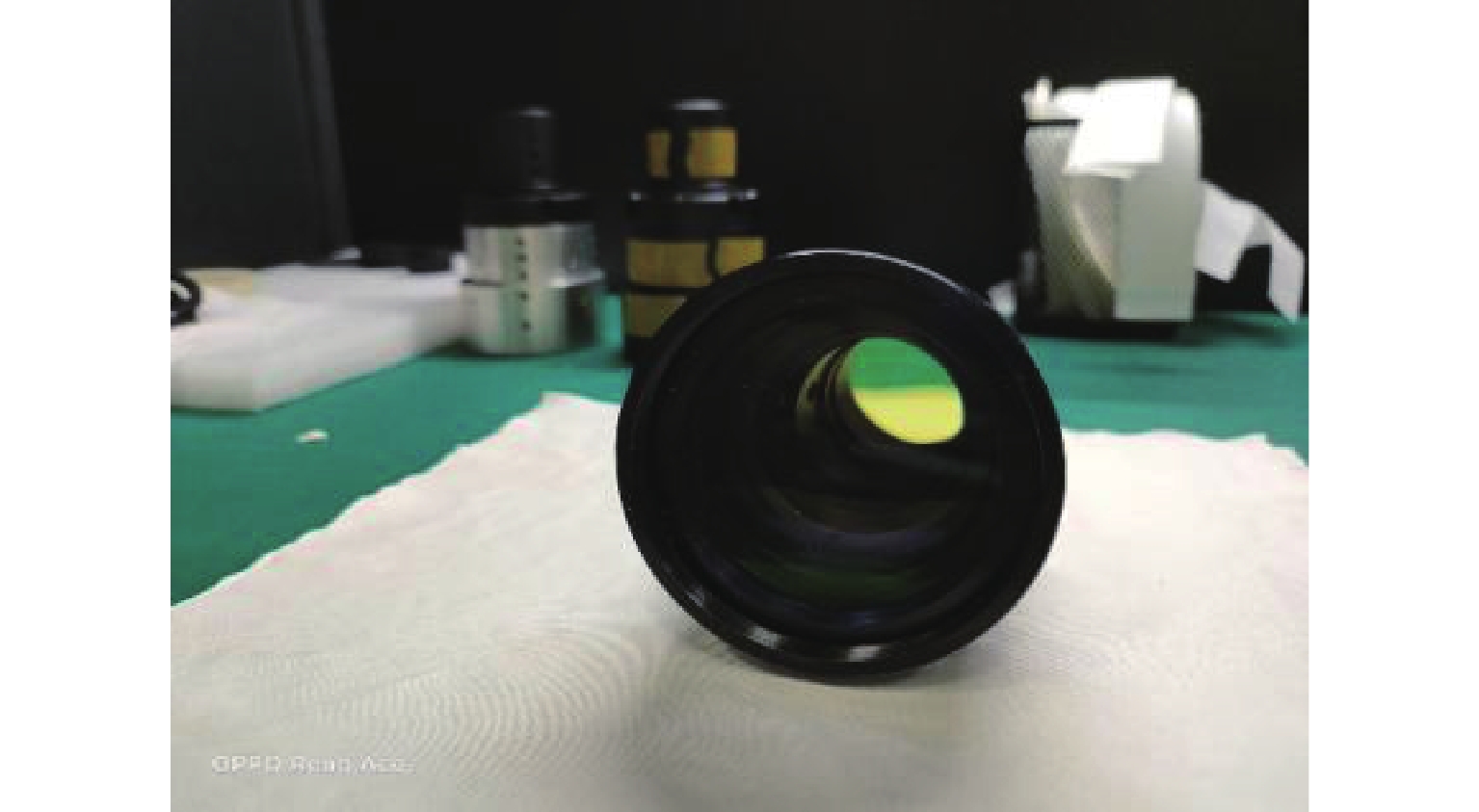
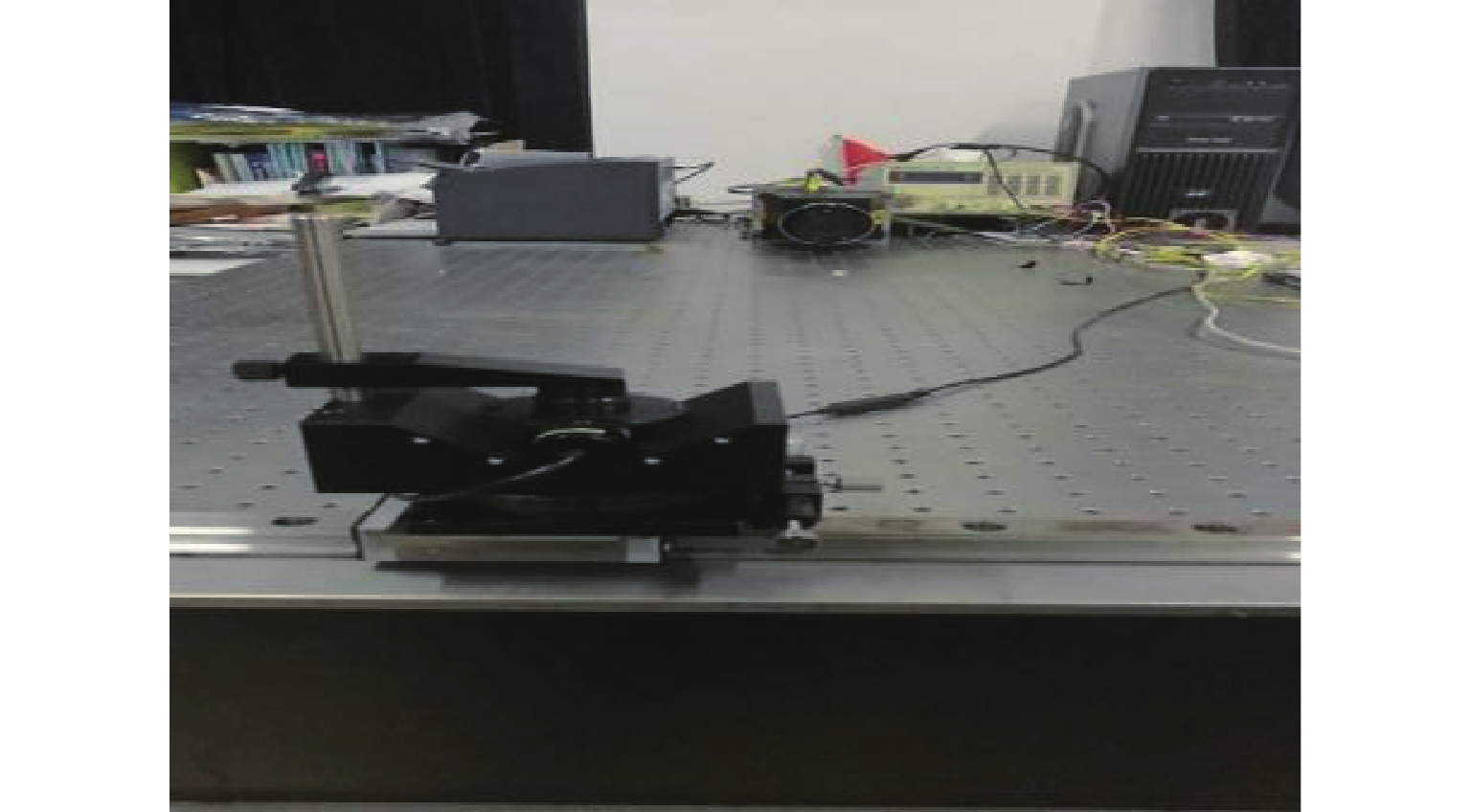


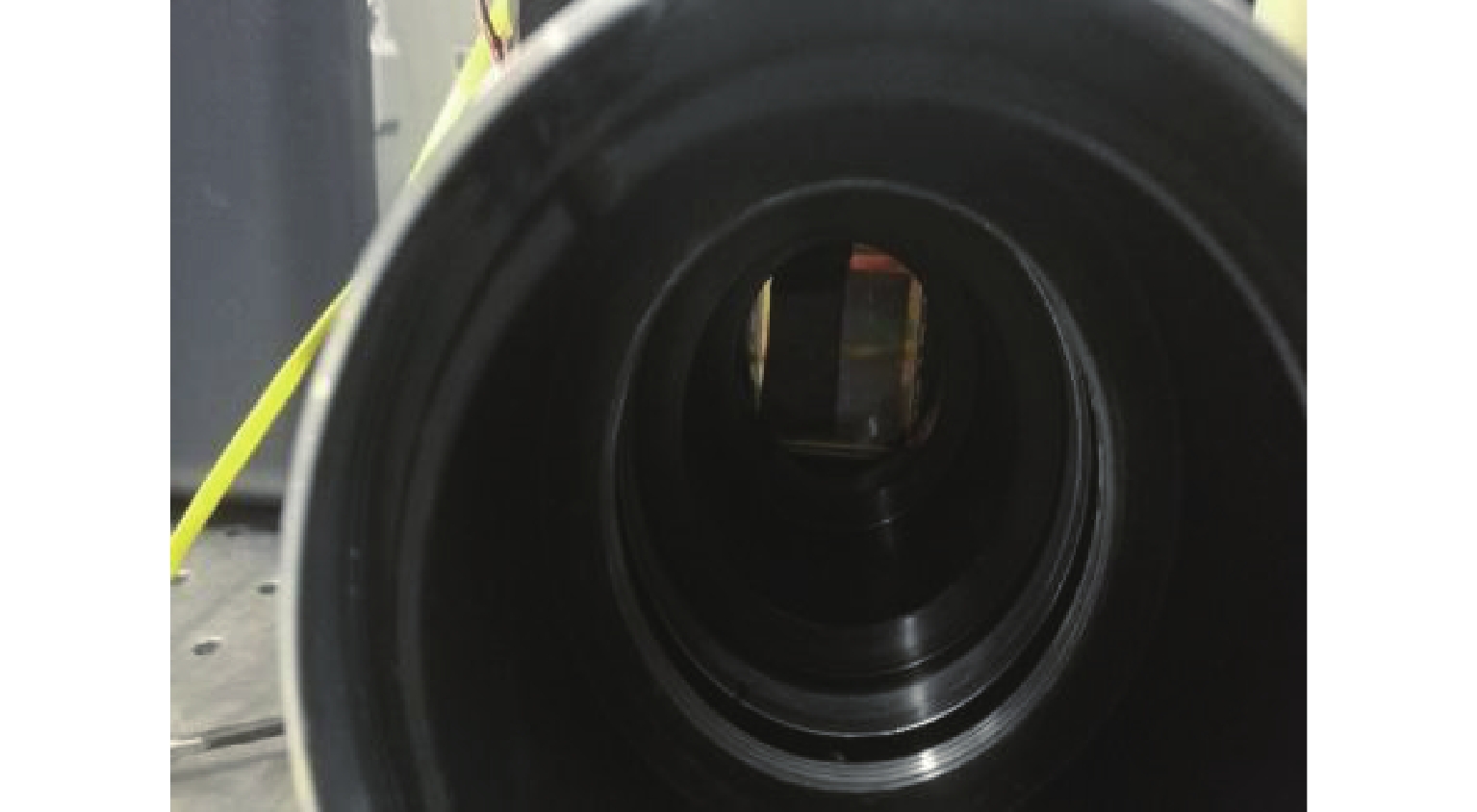

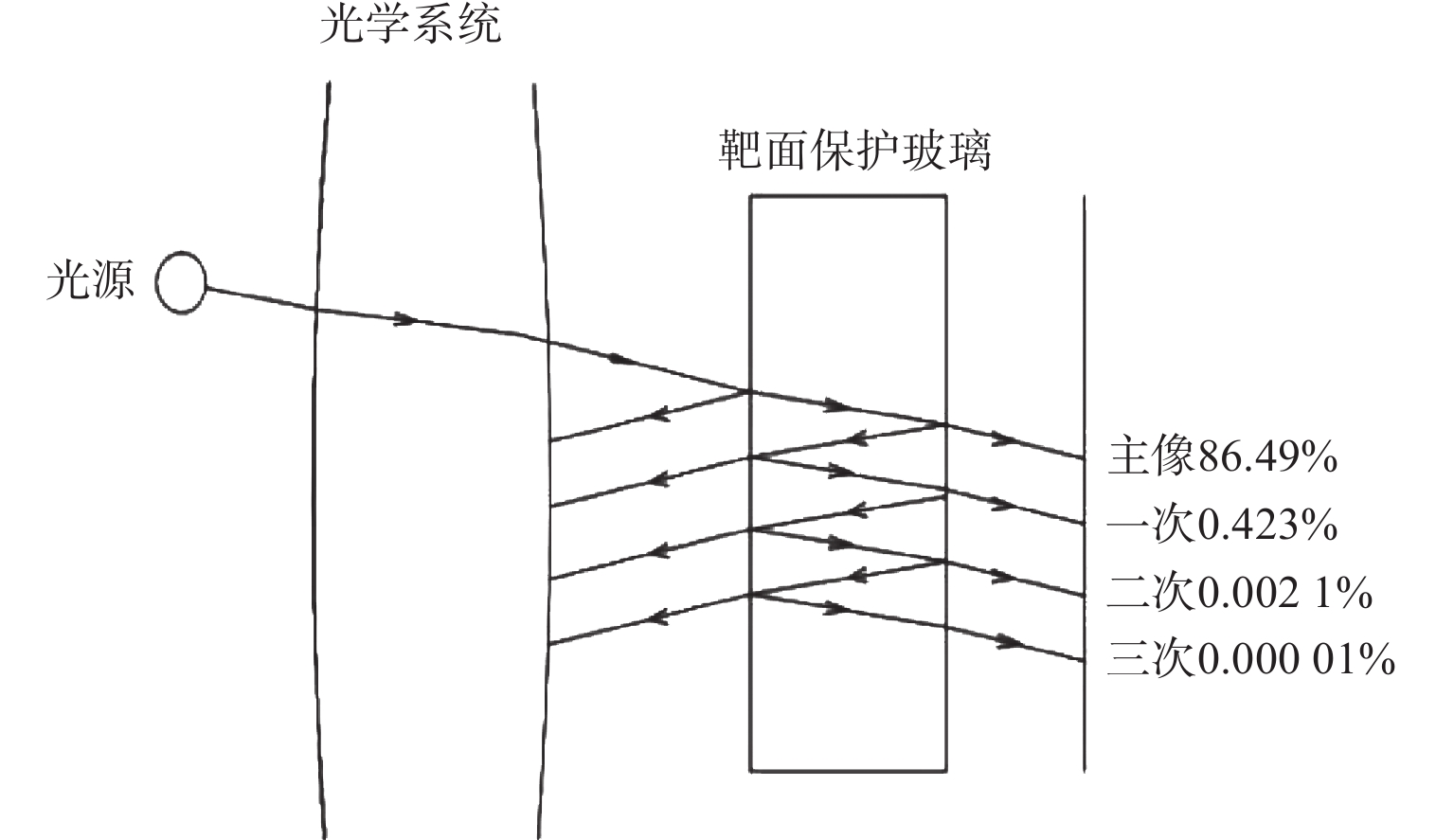

 陕公网安备 61011302001501号
陕公网安备 61011302001501号 